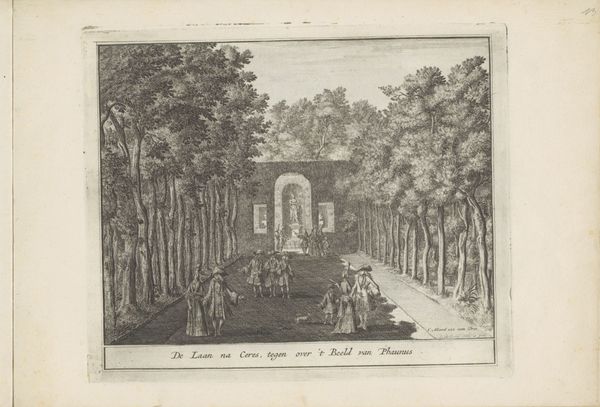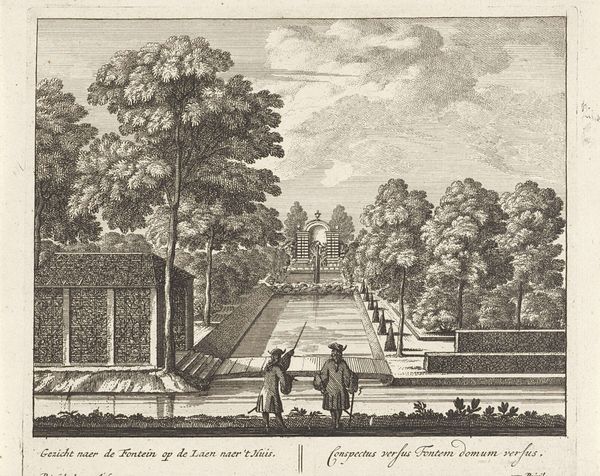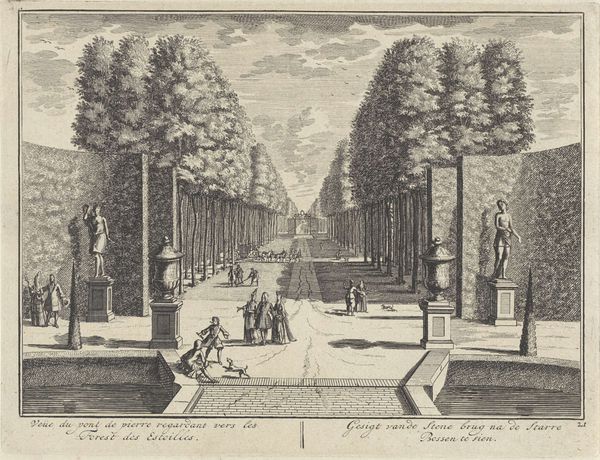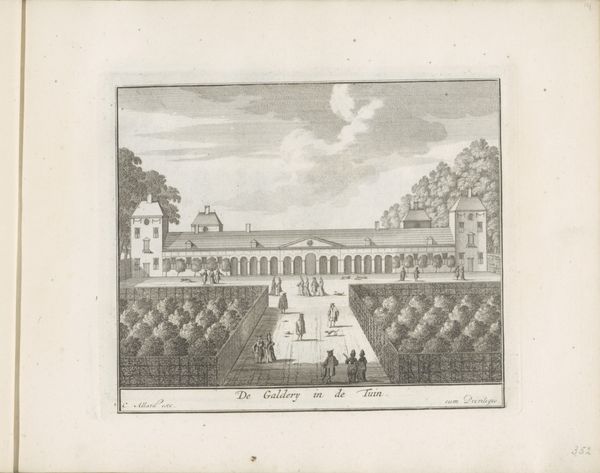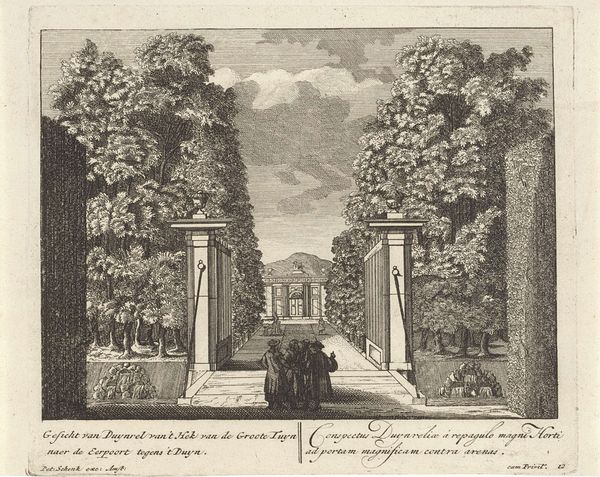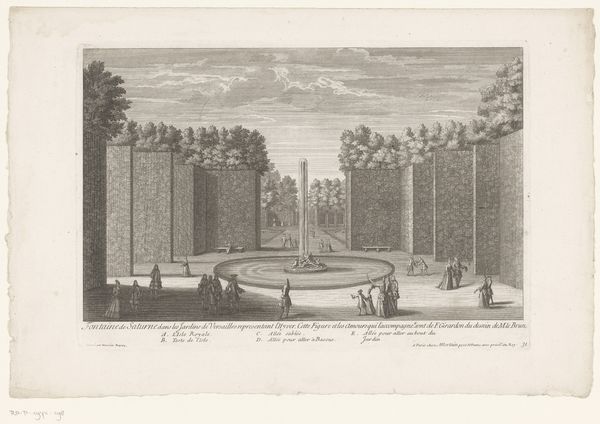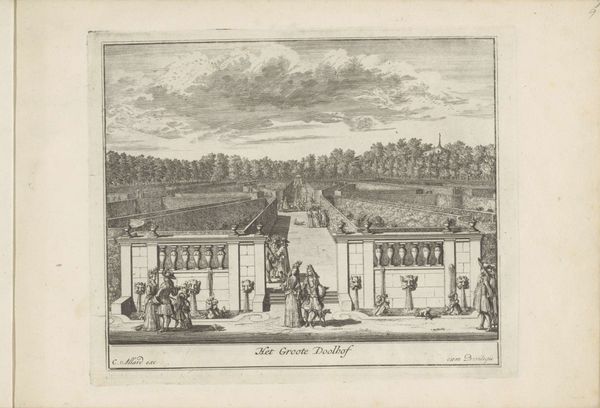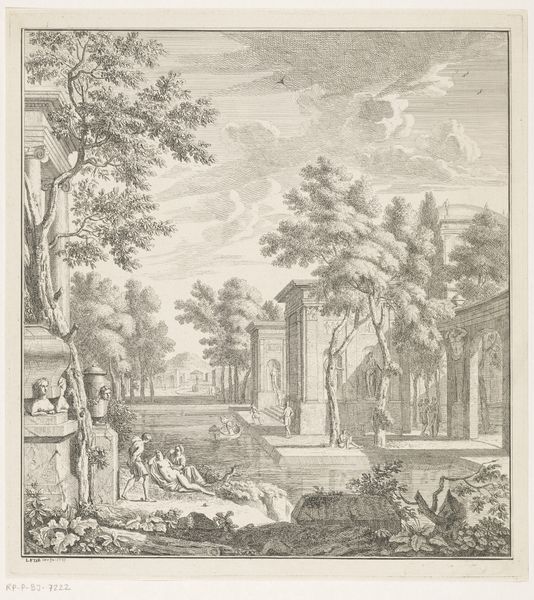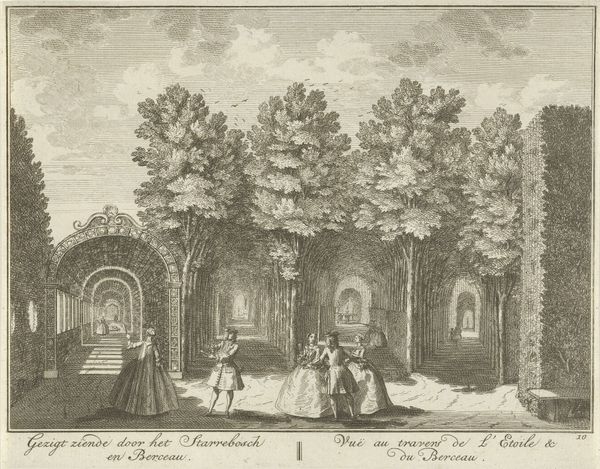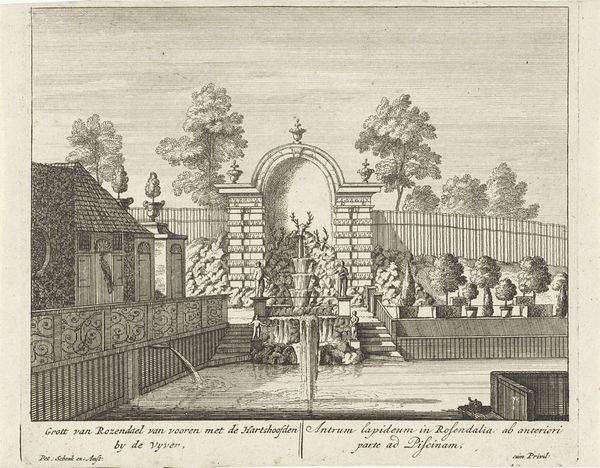
print, engraving
#
baroque
# print
#
old engraving style
#
landscape
#
genre-painting
#
engraving
Dimensions: height 170 mm, width 207 mm
Copyright: Rijks Museum: Open Domain
Editor: Here we have "View of the Great Resting Places from the Amphitheater," an engraving made between 1689 and 1702, currently housed at the Rijksmuseum. It depicts what appears to be a formal garden. I’m struck by the stark contrast between the dark hedges and the figures dressed in bright clothing. What can you tell me about the context in which this print was created? Curator: This image, though seemingly a simple landscape, opens a window into the rigid social structures of the late 17th and early 18th centuries. The formal garden, with its imposing hedges and calculated perspective, becomes a stage for displaying power. How do you see the figures within this staged setting? Do you think they are simply enjoying nature? Editor: I suppose not. Now that you mention it, their placement and attire seem incredibly deliberate, as if their presence serves to accentuate the garden’s artifice. The figures don’t seem to be at ease, like they're posing, emphasizing wealth and social status. Curator: Precisely. Gardens like these weren't merely spaces of leisure; they were extensions of the aristocracy's power. Reflect on the fact that designed landscapes like this would necessitate exploitation of labor, from designers and architects, to laborers maintaining them, creating not only leisure but division. The ‘resting places’ were inherently exclusionary. Editor: That reframes my entire view of this print. What I saw as an idealized pastoral scene now reads as a deliberate statement of class and control. Curator: This piece provides an interesting intersection for the study of art, history and critical theory. Consider this lens when encountering works of this era; this is only the starting point for what the print represents! Editor: I’ll definitely keep that in mind going forward. I never realized a simple garden scene could speak to such complex issues. Thank you!
Comments
No comments
Be the first to comment and join the conversation on the ultimate creative platform.
